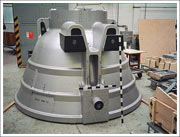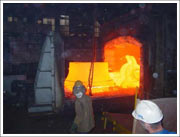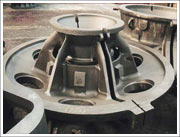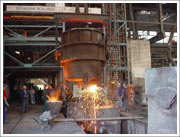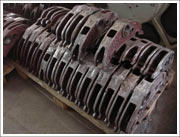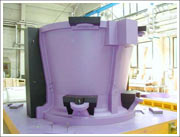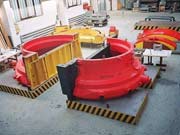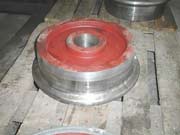FoundryFoundry is one of the metal forming processes that consists of casting a metal or liquid alloy in a mold in order to reproduce a given part after cooling (internal and external shape), while limiting final finishing work as much as possible.
Founding includes the casting of ferrous metals, cast iron and steel. It also includes casting non-ferrous metals, aluminium and other light alloys, and copper, zinc and alloys.
The techniques employed depend on the alloy being cast, the dimensions, the characteristics and the quantities of parts to be produced. It is a sub-contracting industry that is very dependent on the buying sectors: the motor industry, iron and steel, handling equipment, industrial equipment, electrical equipment, the aircraft industry, etc.
The main distinction is between casting so-called non-permanent or “lost molds”, generally made from sand, and casting with permanent metal molds that are also known as “shells”.
Except in the case of lost pattern casting (lost foam or cire perdu), the basic casting mold is made in the form of two half-molds assembled at the parting line. This basic mold can be supplemented, depending on the complexity of the part, with one or more sand “cores”, or perhaps one or more pins (or "draw pieces”) in the case of shell casting.
Production Programs Mechanical presses for press forging
Packing presses
Calibration of upper/bottom-driven presses
Hydraulic pneumatic hammers
Key for rolling machines
Eccentric presses
Automated forging systems
Horizontal and mechanical hot and cold forming presses
Hydraulic presses
The Company
An engineering foundry producing parts of a unit weight ideally situated between 5 kg and 140 tons for steel, and 80 tons for cast iron. 70% of production is intended for export.
Parts are used in the gold mines of Australia and South Africa and in the United States.
Some of the parts used in the Channel Tunnel were also produced here.
. |  Foundry
Foundry  Foundry
Foundry 










